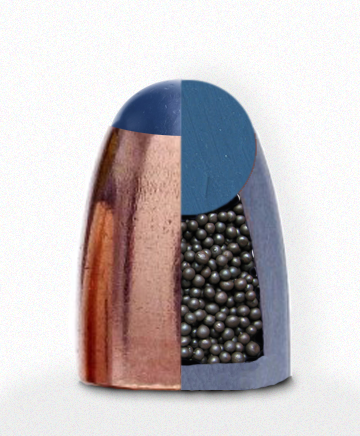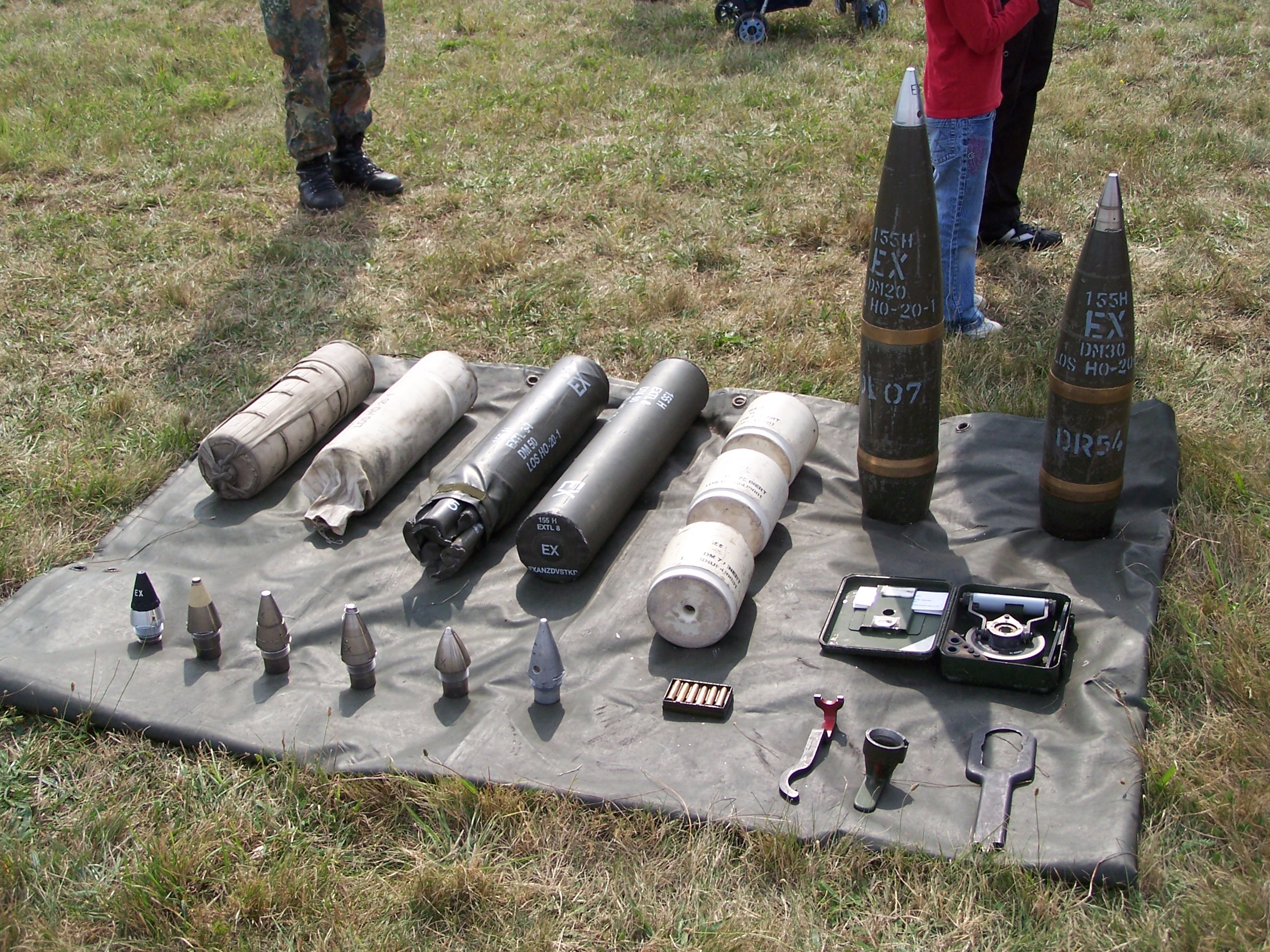|
Cannelure
A cannelure is a groove or channel around ammunition, either bullets or cartridge cases. The cannelure may be pressed into or cast with the bullet or case. Function In the Minié ball the purpose of the cannelure is to hold a lubricant. Cannelures for this purpose are commonly called "grease grooves" or "lubrication (lube) grooves" or just "grooves" by bullet casters (see the glossary of firearms technical terminology maintained by SAAMI). The lubricant reduces metal fouling by lead that is rubbed off the projectile and onto the bore by friction. It also reduces the rate of bore fouling by black powder residue. In modern bullets, such as the 7.62 illustrated here, the cannelure is pressed into the circumference of the bullet to provide a strong purchase for the mouth of the cartridge case when it is crimped onto that cannelure. This is done to prevent the bullet from moving either forward or backward in the case. While bullet setback can be a problem with any self-loading gu ... [...More Info...] [...Related Items...] OR: [Wikipedia] [Google] [Baidu] |
Minié Ball
The Minié ball, or Minie ball, is a type of hollow-based bullet designed by Claude-Étienne Minié for muzzle-loaded, rifled muskets. Invented in 1846 shortly followed by the Minié rifle, the Minié ball came to prominence during the Crimean War and the American Civil War where it was found to inflict significantly more serious wounds than earlier round musket balls. Both the American Springfield Model 1861 and the British Pattern 1853 Enfield rifled muskets, the most common weapons found during the American Civil War, used the Minié ball. Rifling, the addition of spiral grooves inside a gun barrel, imparts a stabilizing spin to a projectile for better external ballistics, greatly increasing the effective range and accuracy of the gun. Before the introduction of the Minié ball, which themselves needed greasing, balls had to be rammed down the barrel, sometimes with a mallet, because gunpowder residue would foul a rifled bore after a relatively small number of shots, ... [...More Info...] [...Related Items...] OR: [Wikipedia] [Google] [Baidu] |
Glossary Of Firearms Terms
The following are terms related to firearms and topics. A B C D E F G H I J K L M N O P R S ... [...More Info...] [...Related Items...] OR: [Wikipedia] [Google] [Baidu] |
Overpressure Ammunition
Overpressure ammunition, commonly designated as +P or +P+ (pronounced Plus-P or Plus-P-Plus), is small arms ammunition that has been loaded to produce a higher internal pressure when fired than is standard for ammunition of its caliber (see internal ballistics), but less than the pressures generated by a Proof shot#Firearms, proof round. This is done typically to produce ammunition with higher muzzle velocity, muzzle energy, and stopping power, such as ammunition used for Security forces, security, Self-defense#Armed, defensive, or hunting purposes. Because of this, +P ammunition is typically found in handgun calibers which might be used for Paramilitary, paramilitary forces, Security guard, armed security, and Defensive gun use, defensive purposes. +P vs. magnum cartridges List of Magnum cartridges, Magnum cartridges, such as the .357 Magnum, are usually developed by greatly increasing the working pressure of an existing cartridge, and the resulting cartridges are typically diffe ... [...More Info...] [...Related Items...] OR: [Wikipedia] [Google] [Baidu] |
Glaser Safety Slug
Glaser Safety Slug is a frangible bullet made by Cor-Bon/Glaser, a subsidiary of Dakota Ammo, an American ammunition company formerly based in Sturgis, South Dakota. The Glaser Safety Slug was developed by Jack Canon in 1975, the same year the company was founded by Armin Glaser. History The original round was a hand-made hollow-point bullet filled with No. 12 birdshot () with a flat polymer cap. To improve ballistic performance, a polymer-tipped round ball was introduced in 1987, and the current compressed core form was first sold in 1988. The formulation of the polymer was also changed in 1994 to improve fragmentation reliability. Performance The company produces bullets in calibers from .25 to .45 for pistols and from .223 to .30-06 for rifles. Each caliber comes in two forms, "blue" and "silver", the latter having greater penetrating power due to the use of no. 6 birdshot rather than no. 12. The projectile in the cartridge is of a lighter weight than more conventiona ... [...More Info...] [...Related Items...] OR: [Wikipedia] [Google] [Baidu] |
Driving Band
Russian 122 mm shrapnel shell, which has been fired, showing rifling marks on the copper driving band around its base and the steel bourrelet nearer the front A driving band or rotating band is a band of soft metal near the base of an artillery shell, often made of gilding metal, copper, or lead. When the shell is fired, the pressure of the propellant swages the metal into the rifling of the barrel and forms a gas seal; this seal prevents the gases from blowing past the shell and engages the barrel's rifling to spin-stabilize the shell. Purpose The rotating band has three essential functions: * Center the rear end of the projectile in the gun barrel. * Seal the bore to prevent burning powder gas from moving through the rifling grooves past the projectile. * Engage with the rifling of the barrel to spin the projectile and stabilize its flight. Characteristics The shell is stabilized for yaw in the barrel by a smaller bourrelet band near the front of the projectile. This b ... [...More Info...] [...Related Items...] OR: [Wikipedia] [Google] [Baidu] |
Gas Check
Gas is a state of matter that has neither a fixed volume nor a fixed shape and is a compressible fluid. A ''pure gas'' is made up of individual atoms (e.g. a noble gas like neon) or molecules of either a single type of atom ( elements such as oxygen) or from different atoms ( compounds such as carbon dioxide). A ''gas mixture'', such as air, contains a variety of pure gases. What distinguishes gases from liquids and solids is the vast separation of the individual gas particles. This separation can make some gases invisible to the human observer. The gaseous state of matter occurs between the liquid and plasma states, the latter of which provides the upper-temperature boundary for gases. Bounding the lower end of the temperature scale lie degenerative quantum gases which are gaining increasing attention. High-density atomic gases super-cooled to very low temperatures are classified by their statistical behavior as either Bose gases or Fermi gases. For a comprehensive list ... [...More Info...] [...Related Items...] OR: [Wikipedia] [Google] [Baidu] |




